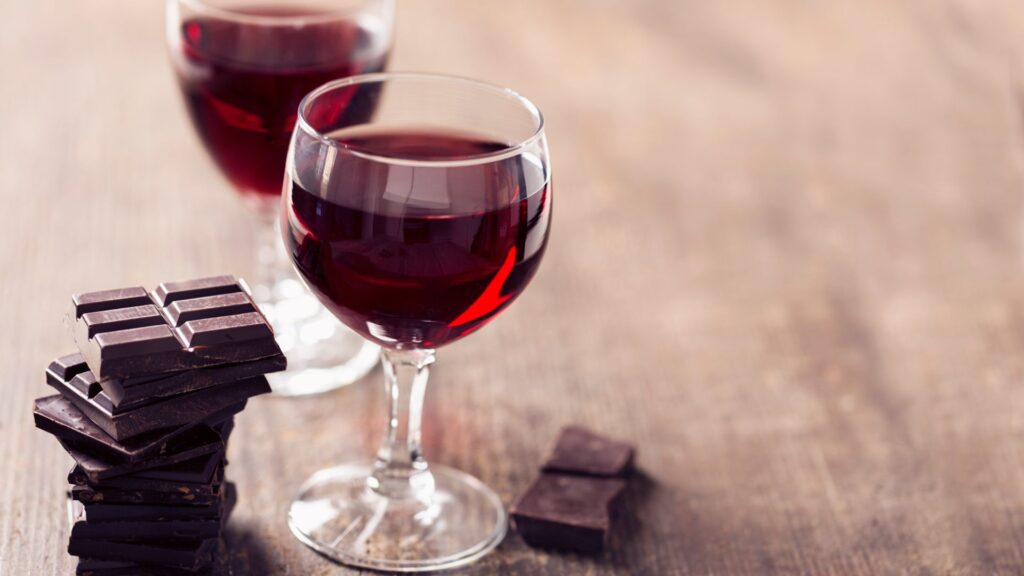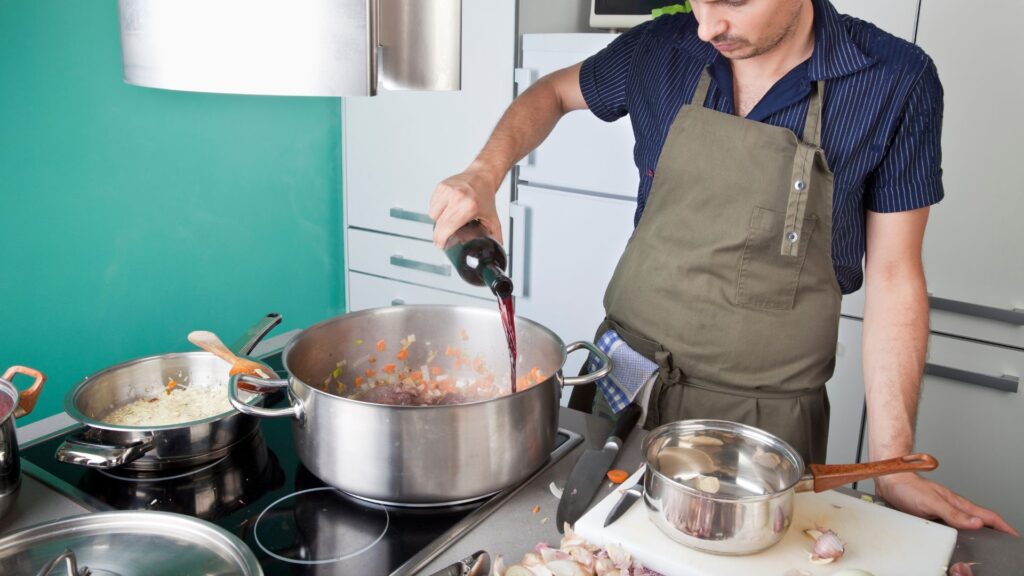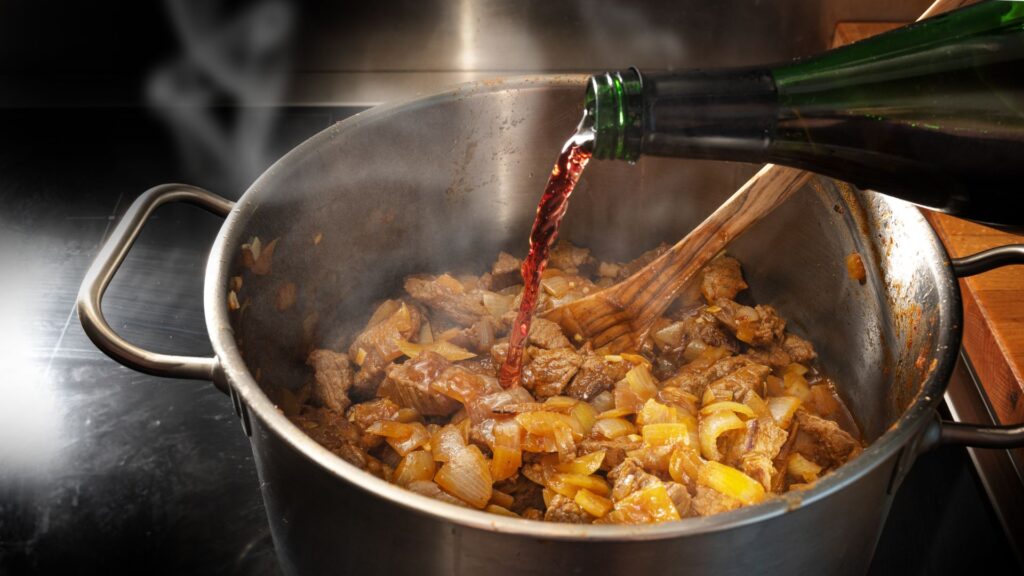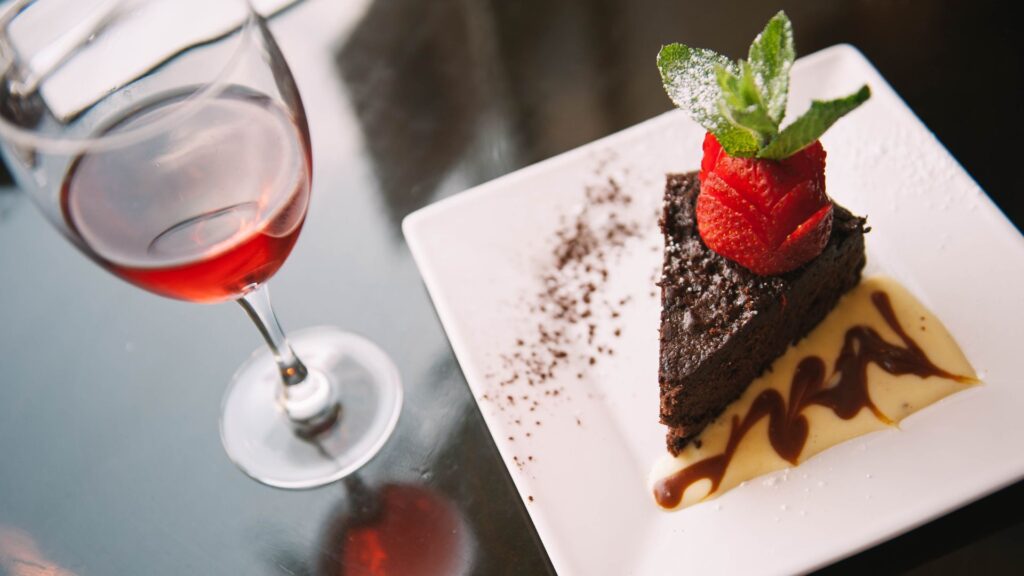
Wine or not? Just Uncork the Mysteries
People have consumed wine for millennia, and the health benefits of doing so are well documented yet alcohol is not always something that your doctor will recommend consuming without restriction. Once upon a time, people used to shake the container of alcohol and observe the bubbles to determine its alcohol content. Nowadays, it’s even easier. You can use a specialized hydrometer called an alcohol meter that is calibrated to calculate and measure the alcohol content of a liquid.
Emerging research continues to indicate that moderate wine consumption — approximately one glass per day — offers a number of health benefits. Wine is not only for consumption. Learning how to cook with wine is a simple way to take your culinary skills to the next level, whether you’re looking for a gratifying way to finish a bottle or want to elevate an otherwise simple dish.
In this article, nutritionists affiliated with Sirwiss explain everything you need to know about the health benefits of drinking wine, the healthiest variety of wine, and its potential drawbacks, as well as how you can use your preferred alcohol in cooking.
What Is Red Wine and How Is It Made?

Crushing and fermenting entire, dark-colored grapes results in red wine. Red wine comes in a wide variety of flavors and hues. Shiraz, Merlot, Cabernet Sauvignon, Pinot Noir, and Zinfandel are all popular choices. The standard range for alcohol content is between 12 and 15%. There are health benefits associated with drinking red wine in moderation. This is mostly because of the abundance of potent antioxidants it contains. Some of the benefits of drinking wine in moderation may also come from the alcohol content.
Red Wine: Good or Bad?
An occasional glass of red wine may be good for your health. However, there may be risks associated with drinking wine daily. Red wine’s purported health advantages have been hotly contested for some time. Some people think wine is overrated while others think it’s fine to have a glass a day as part of a healthy diet. Consuming red wine in moderation has been linked to a reduced risk of numerous ailments, including cardiovascular disease. However, the border between safe and harmful consumption is razor thin.
Red Wine Contains Resveratrol and Other Antioxidants

The antioxidant content of grapes is very high. Examples of these are the polyphenols resveratrol, catechin, epicatechin, and proanthocyanidin.
Antioxidants, like resveratrol and proanthocyanidins, are thought to be the reason why red wine is good for you. Proanthocyanidins have been shown to lessen reactive stress in some cases. There is a chance that some health problems could be prevented. Grape skin contains vitamin resveratrol. Studies on antioxidants have linked this compound to many health benefits, such as defense against cancer, heart disease, and inflammation.
Furthermore, resveratrol has been demonstrated to increase the lifespan of experimental animals. However, the resveratrol concentration of red wine is rather modest. To consume the same amount as used in animal trials, you would need to drink numerous bottles each day. Due to apparent issues, this is strongly advised. If you solely drink wine for the antioxidants, the benefits of resveratrol may not be worth the effort.
Red Wine May Protect Against Heart Disease
Red wine, when consumed in moderation, has more health advantages associated with it than any other alcoholic beverage. When incorporated into a healthy diet, such as the Mediterranean diet, these advantages become apparent. The correlation between wine consumption and cardiovascular disease risk appears to follow a J-shaped curve.
Moderate red wine drinkers, those who consume about 150 ml (5 oz) each day, reduce their risk to that of nondrinkers by about 30%. However, a greater intake greatly raises the risk of heart disease.
Moderate consumption of red wine may protect against cardiovascular disease by keeping the “good” HDL cholesterol in the blood. Up to 50% less oxidative damage and oxidation of “bad” LDL cholesterol may also occur. Two to three glasses of de-alcoholized red wine per day were associated with a possible reduction in blood pressure in one study.
Moderate wine drinkers have been reported to have a lower risk of death from heart disease than either nondrinkers or heavy beer and spirit drinkers, although more recent studies are needed to corroborate this.
Other Health Benefits

The powerful antioxidants found in red wine have been linked to a number of other health advantages. Consumption of red wine has been associated to:
- Reduced risk of dementia: Drinking 1–2 glasses of wine per day has been linked to a reduced risk of dementia and Alzheimer’s disease.
- Reduced risk of depression: A study of middle aged and elderly people showed that those who drank 2–7 glasses of wine per week were less likely to become depressed.
- Reduced insulin resistance: Drinking 2 glasses per day of regular or dealcoholized red wine for 4 weeks may reduce insulin resistance.
- Reduced risk of COVID-19 infection: A recent study found that red wine and fortified wine played a role in protecting test subjects from COVID-19 infection, while beer and spirits were shown to increase their risk.
Drinking red wine in moderation appears to provide health benefits. There are, however, some significant drawbacks, which will be explored below.
Wine’s Harmful Effects on Your Body

Red wine may have some health benefits, but the risks connected with drinking it outweighs them, according to the World Health Organization. Alcohol is linked to many different types of cancer, heart disease, and developmental abnormalities.
Among these are:
- Alcohol dependence: Drinking alcohol regularly may become out of control and lead to alcoholism.
- Liver cirrhosis: When more than 30 grams of alcohol (about 2–3 glasses of wine) are consumed each day, the risk of developing liver disease increases. End-stage liver disease, called cirrhosis, is life threatening.
- Increased risk of cancer: Alcohol consumption is a risk factor in 4% of all cancers. The most common types affected by alcohol are breast and colorectal cancers.
- Increased risk of depression: Heavy drinkers are at a much higher risk of depression than moderate or non-drinkers.
- Increased risk of death and disease: Drinking a lot of wine, even only 1–3 days a week, may increase the risk of diabetes in men. High alcohol intake has also been linked with an increased risk of premature death.
How Much Wine Can You Drink?
In moderation, consuming red wine poses no health risks; only when consumed in excess should caution be exercised. Consuming modest amounts of red wine is seen as healthy in Europe and the United States because:
1–1.5 glasses a day for women.
1–2 glasses a day for men.
Some sources also recommend having 1-2 alcohol-free days each week.
Remember that this is a reference to your overall alcohol consumption. If you’re also drinking other alcoholic beverages, this amount of red wine could send you over the limit. You should probably stay away from wine and other alcoholic beverages if you have a history of substance misuse. If alcoholism runs in your family, exercise extreme caution as well.
Cooking with Wine

Wine doesn’t just make food taste better in the glass; it can also be used as a flavoring or preserved in many different ways. Any cook who uses wine will find it useful to know how it changes when cooked. Acidity, tannins, alcohol, and (sometimes) sugar, all of which affect how wine tastes, have a big effect on how it acts in the kitchen. Tannins get more bitter, and flavors that taste sweet get stronger. But when a tannic wine is cooked down with meat or stock, the bitterness is lessened because the tannins bond to the proteins in the meal.
The fact that wine is alcoholic can be both a blessing and an impediment in the kitchen. After adding wine to a dish, it’s important to cook it because the alcohol will evaporate and make the dish less pungent, which can be a problem with hot foods. But keeping some of the alcohol in the mix can give you a third liquid to dissolve other ingredients in, in addition to water and fat. This can make the colors and smells stronger.
Roasting

When you roast meat or veggies with a splash of wine, the wine makes the heat moist and gives the roast flavor. When picking a wine to roast with, think about the color and taste of what you’re cooking: A bold red wine goes well with hearty meats like lamb and dark veggies like purple carrots. A lighter white wine goes better with a roast chicken or pale vegetables like parsnips or squash.
Steaming
The main reason to use wine instead of water when boiling is flavor, flavor, flavor. Full-bodied white wines, fortified wines, and rice wines work best for steaming because they have a strong taste without the color or bitter tannins of a red wine. In this dish for Shaoxing-Steamed Steelhead Trout and Mushrooms, the food is steamed to bring out the flavors of Shaoxing, a Chinese wine made from fermented rice. Steaming adds moisture and cooks the mushrooms and fish softly to a medium doneness.
Marinating
Marinades soften the muscle tissue in meat, allowing the taste to get into the meat and add another layer of flavor. Even though you can use any acidic liquid to make a marinade, wine is a great choice because it not only adds acidity but also makes the finished dish taste more complicated. Bringing the wine to a boil helps cook off some of its alcohol and focus its fruity and acidic flavors.
Braising
Braising is the process of cooking food quickly to get it brown and full of flavor, and then slowly in a covered pot with liquid. Most of the time, this two-step method is used to soften and flavor tougher cuts of meat, but it can also be used on veggies, especially those with tough stalks and leaves. Braising can be done with a lot of different liquids, like milk or stock, but wine is best because of its taste and acidity. Fruity flavors add depth, and the acidity in wine wakes up the mellower flavors that build up during a braise. Fortified wines, like sherry and port, are wines that have been mixed with a distilled spirit, usually brandy. They work especially well in braises because of their rich, fruity, and nutty flavors.
Deglazing

Deglazing is the process of adding wine to a pan to loosen food that has stuck to the bottom. This makes a sauce or gravy that is full of flavor. Changing the wine in a pan sauce opens up a world of options, from a White Wine Pan Sauce with Crème Fraiche and Spring Herbs for chicken or fish to a Red Wine Pan Sauce with Cumin and Chiles for beef or lamb to a Sherry Pan Sauce that goes well with pork or duck.
Baking
Wine helps baked goods stay moist and light, and it also adds hints of acid and fruit. The acidity of the wine gives it a small tartness that tastes a bit like buttermilk. The best part about using wine in baking is that it makes the food taste better. You can do this by choosing a wine that goes well with and adds to your recipe. If you don’t know how to do this, your food could go wrong. So, take your time when choosing a wine to go with your meal.

Wine should be added to your day in a modest way. Adding wine to your baking is a smart way to make your food taste better, stop food from going to waste, and try out new ways to bake. Use a small amount of wine in your food preparation recipes to get started.